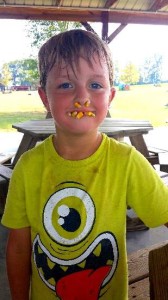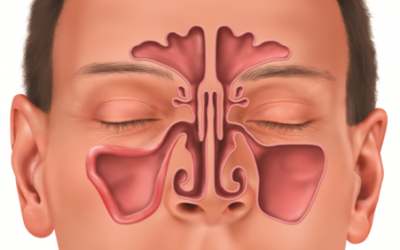Nasal foreign bodies are usually encountered in children. However, occasionally they may occur in adults with mental retardation or psychiatric illness. Foreign bodies may be inorganic material such as plastic or metal. Examples include small parts of toys or even beads. These are sometimes discovered incidentally. Organic foreign bodies include wood, sponge, and food. They tend to irritate the nasal mucosa more and lead to earlier symptoms. Peas, beans, and nuts are among the more common organic foreign bodies. Males are more likely to insert foreign objects into their nose. Nasal foreign bodies including toys, building set pieces, coins, nails, screws, and batteries. In females, they tend to be jewelry and buttons. The average patient age is usually about 3 years.
Bleeding is commonly reported in patients with nasal foreign bodies, although it is not significant in nature. The foreign body itself may cause irritation to the lining, mucosal damage, and sometimes extension into adjacent structures. It can lead to septal perforation and cartilage necrosis. Unilateral foul-smelling nasal drainage in a child is a foreign body unless proved otherwise. A persistent foreign body can lead to sinusitis due to obstruction of the drainage pathways. Button batteries are very destructive and need to be removed within hours if possible to prevent chemical burns, ulceration, and severe damage within the nasal cavities. They cause destruction via low voltage electrical current and severe necrosis if the alkaline contents leak out. Damage can occur within hours and require immediate removal to prevent tissue destruction and complication. Sometimes foreign bodies can be displaced posteriorly and obstruct the nasal airway as well as lead to tracheal aspiration which is a serious situation. Nasal foreign bodies can sometimes be removed in the office in a cooperative patient. If not, the procedure would need to be performed under general anesthesia.





